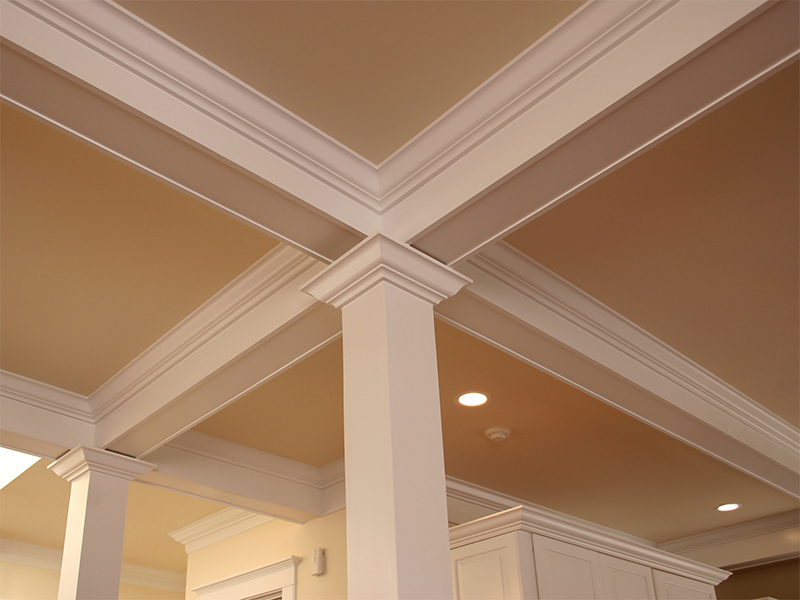Cutting Crown Molding

Using a miter saw to cut crown molding is one of the most excellent ways to finish a room. Something almost regal about how it extends the ceiling height and gives the entire room a more finished appearance. Most people think of mansions or castles when they think about crown molding, but many homeowners are considering it as an option in their own homes. This means that you need to know how to cut crown molding if you are in the business of building or remodeling or if you are a skilled do-it-yourself handyman.
Cutting crown molding can be a challenging job for anyone, even a skilled carpenter. First, you want to avoid the impression that this is anything like cutting door casing or baseboards. This is an entirely different creature altogether. Since doors, windows, and baseboards are flat, cutting their trim is a much easier job. Crown molding, on the other hand, has a slight difference in the design. It has two angled edges, one that rests against the wall and one against the ceiling. You will have to think about the outside and inside corners during cutting and installation and those angles. Here are some steps to consider and follow when installing crown molding.
Tools Needed

The two essential tools you need for cutting crown molding are a miter saw, and a coping saw. The miter saw is used for cutting scarf joints. This is a joint that connects two lengths where one length of crown molding is not long enough to cover the entire area you are working on. For example, your wall is 12 feet long, and your crown molding is only 8 feet long. You will also use the miter saw to cut the outside corner. You will need to create a cope cut for the inside corners, where the coping saw comes into play.
The miter saw makes your cutting job very easy because you can set it to the specific angle you need. When you are cutting a piece of crown molding with the miter saw, you will position it upside down or opposite to the way you will install it for a proper cut. Please note that you will return to the hardware store to buy more crown molding before cutting.
A scarf joint is easier to make than cuts for the outside corner. Proper orientation of the molding is essential for getting the right cut. Set the saw to 45° to make the first cut, then turn it to 45° in the other direction to cut the second piece. Brace the fragments against the fence and correctly set the angles; there is no reason you shouldn’t have a perfect, tight corner.
Cutting the Crown Molding
Brace the length of molding tightly against the saw’s fence to make a clean cut. If you need to create a scarf joint, you will make a sister cut to the one you made previously. Hold the second piece in the same inverted position, and the two pieces should join seamlessly. Perfecting this type of joint may take some time, but you’ll love the results.
The inside corner is a little trickier, but you can do this with some practice. You will need two different cuts, a butt cut, and an inside miter. This requires a cope cut on the leading edge of the holding. The coping saw makes it easy to cut at an angle to make the cornea meet. After the cutting, you will need to smooth the edge with sanitizer.
It’It’sse to do a few test cuts on scrap pieces of molding before making your final cuts on the crown molding installed in your home. Making templates for your crown molding miter cuts is also helpful. If your plan is to paint the molding after installation, look for gaps and seal them with caulk before painting.




One Comment
Drew
March 22, 2017 at 11:04 amGreat advice for this crown molding. I have been wanting to do this around my dining room. Thanks so much for sharing!